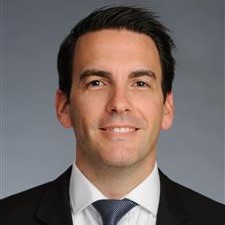The Seychelles are saturated with colour: cerulean-coloured seas and azure skies collide at the horizon; emerald canopies engulf the islands like moss.
Colour even pervades the country’s financial system. In 2018, the Seychelles issued the world’s first sovereign ‘blue’ bond, one of several new funding strategies that the country and other emerging markets (EMs) are using to strengthen their economies against the physical impact of climate change. Doing so is no mean feat: around $2tn a year of investment is required.[1]
Blue bonds channel funds raised from investors towards sustainable marine-based projects, much as proceeds raised by their ‘green bond’ counterparts filter into terrestrial nature investments.
Sustainable debt markets like these are succeeding where traditional markets have so far failed. EMs typically struggle to attract international investment owing to higher perceived risk, increasing their cost of capital. Innovative investment vehicles like the Seychelles’ blue bond are opening the doors to private funding eager to tap another source of sustainable investing.
But while investor appetite for these bonds has been notable, their popularity comes with downsides. Demand outstrips supply in some parts of the market, forcing sustainable investors to pay a green premium over a sovereign’s conventional debt. India, for example, issued its first green bonds earlier this year, which yielded five to six basis points lower than the corresponding government bonds at the time. But there is a limit to investors’ appetite to pay ‘greeniums’: in September, one government official suggested India wouldn’t issue any further green bonds this fiscal year as investors were unwilling to pay more for sustainable debt. The popularity of green bonds has also led to a tendency for investors to hoard them, reducing secondary market liquidity.
At the same time, developed economies have been at the forefront of the market’s growth, diverting capital away from emerging markets. Sustainable debt remains a much smaller share of GDP across emerging markets than it does developed ones. Where EM sovereigns have issued green bonds, it has been highly concentrated in Asian investment grade.
Scan further down the ratings scale and you’ll find that those nations most exposed to the climate crisis will see their own climate financing gaps widen as extreme weather events and rising risk hamper their ability to raise debt.

It’s not easy being green
These nations need more support to access capital, particularly in the case of blue bonds issued by small island developing states (SIDS), that lack the resources for large-scale issuances.
A 2022 Bahamian blue bond offers a promising example of a private-public alliance. The bond was backed by a $200mn policy-based guarantee (PBG) approved by the Inter-American Development Bank (IDB). Not only did the PBG make the bond more attractive (at $385mn it benefits from increased liquidity in the secondary market), it also helped to reduce risk, providing the deal with a triple-A rating.
An issuance by Ecuador earlier this year went one step further. This “debt-for-nature swap” saw $1.63bn of the country’s debt repurchased at a near 60 per cent discount and exchanged for a $656mn loan at lower rates. Savings generated through the arrangement are now being used to finance $323mn of conservation activities in the country’s Galápagos Islands over the next 15 years. Meanwhile an $85mn guarantee provided by the IDB and an additional $656mn political-risk insurance from the US Development Finance Corporation both help lower risk.
Supranational bodies like the International Monetary Fund (IMF) can also support developing nations. The organisation’s $45bn Resilience and Sustainability Trust, launched last year, helps low-income and vulnerable middle-income countries build resilience to external shocks such as climate change. This facility has begun lending to countries including Rwanda and Costa Rica through long-dated funding at favourable terms. But as highlighted at discussions during the latest annual IMF meeting, far greater levels of investment are still required to plug the climate financing gap.
Tangled up in blue
Investors in sustainable debt need to know their capital is being put to good use. And while there are plenty of guidelines available to countries looking to issue sustainable debt, variation in reporting standards and competing taxonomies make it difficult for those investing across multiple jurisdictions to find consistency. Green and blue bond principles developed by the International Capital Markets Association have gone some way towards strengthening investor confidence in sustainable debt markets, while some EMs, such as Indonesia and South Africa, have developed their own classification frameworks to define environmentally sustainable investments.
One hurdle is that it’s surprisingly difficult to define what constitutes progress in certain areas of the market. Whereas green bond issuers tend to use one metric (tonnes of carbon emitted) there is no universal method for measuring marine health, for example.
Promisingly, developed nations are waking up to the problem, raising the possibility of further international collaboration. The agreement of a loss and damage fund at last year’s COP27, for instance, marks an effort to assist what they call “developing countries that are particularly vulnerable to the adverse effects of climate change”.
Moreover, given the demand for sustainability-linked EM debt issuance, coupled with the ambition of the developing world to fund the growing climate financing deficit, we are likely to see more innovation from the capital markets themselves.
This is in everyone’s interest. It will not be long before climate risk translates into sovereign risk and has a material bearing on risk/return profiles. Investors will be forced to change the way they look at EMs. Mature sustainable debt markets offer a way around some of these problems. For issuers, they can provide low cost, long-term funding aimed at improving climate resiliency, sustainability metrics, and fiscal balances at a time when the global cost of capital has priced out many countries from accessing traditional financing. For investors, they offer new routes into markets which often lie beyond their reach. The grey world of fixed income could do with a splash of colour.
[1] https://iea.blob.core.windows.net/assets/a48fd497-d479-4d21-8d76-10619ce0a982/ScalingupPrivateFinanceforCleanEnergyinEmergingandDevelopingEconomies.pdf








































